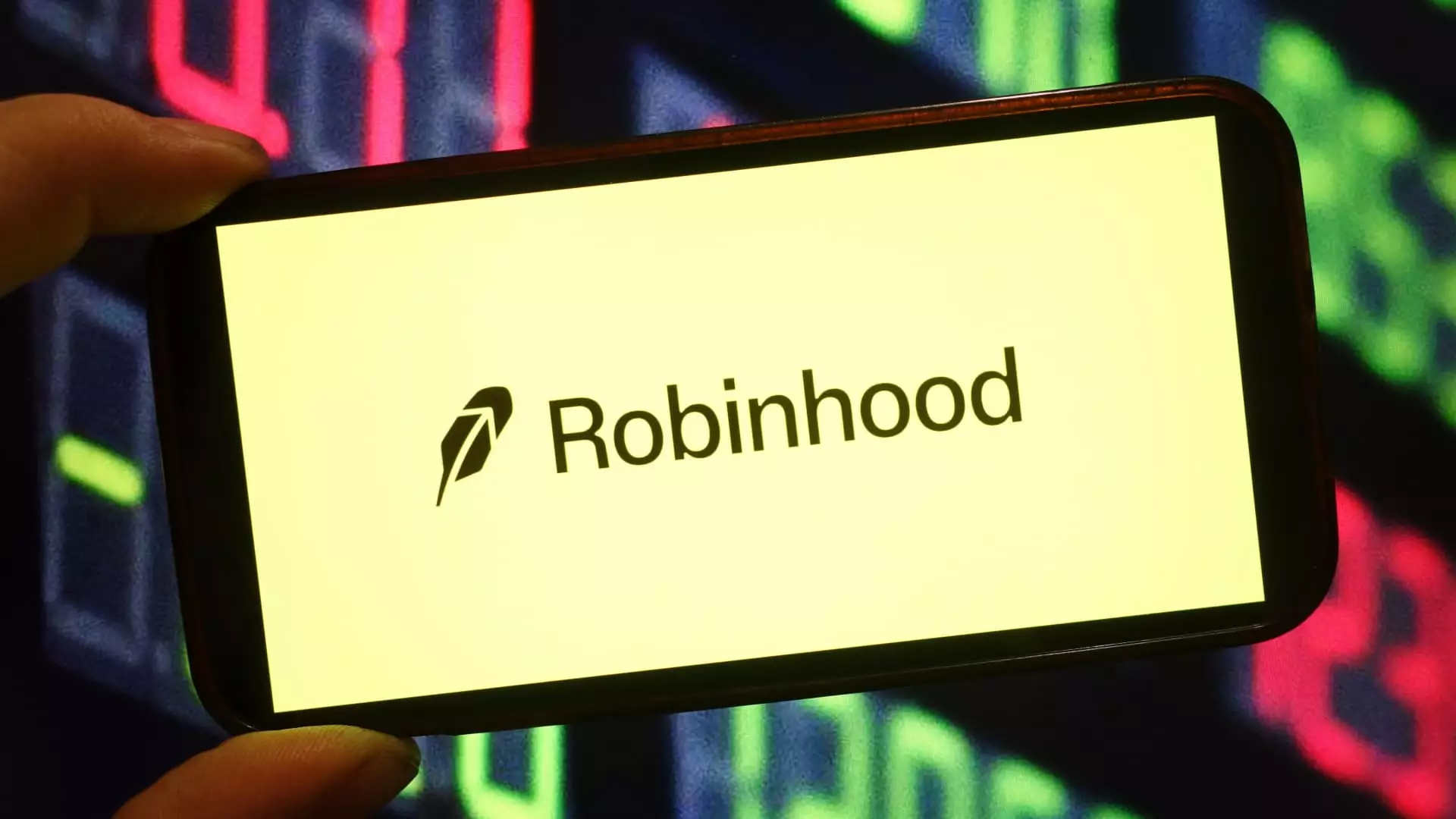The fervor surrounding Robinhood’s trading platform has peaked to dramatic heights, especially in the wake of its stock rally after recent political shifts. Enthusiasts and investors were quick to back the stock following former President Donald Trump’s push toward a pro-cryptocurrency environment. Despite a noteworthy bounce of 8% earlier in the week, seasoned analysts like Courtney Garcia from Payne Capital Management advise caution. With an 11% fall earlier this week, the question remains: Is the recent uptick truly a sign of stability, or is it merely an ephemeral blip in an otherwise turbulent market?
The cryptocurrency narrative has fueled a significant portion of Robinhood’s appeal, providing a sense of validation for many retail investors. However, it’s vital to recognize that much of this hype has already been absorbed into the stock price. As Garcia pointedly notes, while trading volume has increased, it does not provide sufficient evidence to suggest sustained stock appreciation. After all, the lure of Robinhood is in its democratization of trading, not necessarily its direct financial performance.
Evaluating the Crypto Craze
Cryptocurrency remains a double-edged sword for Robinhood. On one hand, it opened doors for countless new users; on the other, it casts a long shadow of volatility and risk. Garcia warns that the euphoria of a pro-crypto administration’s election may have already been integrated into the stock’s valuation. This could mean investors are stepping onto a rollercoaster with little reward waiting at the end. For investors seeking meaningful gains, the crypto narrative surrounding Robinhood may prove excessive and ultimately hollow once the market cools.
For many, the inherent riskiness of investing in a platform founded on speculation and fluctuating trends calls for a more discerning approach. The potential for upside may look favorable in the eyes of some analysts, but the reality is that investing should not be based solely on market sentiment, particularly one as fickle as cryptocurrency.
Contrasting AT&T’s Stability
In stark contrast to Robinhood’s precarious positioning, AT&T emerges as a beacon of relative stability and potential. Garcia praises the telecommunications giant for its solid value profile and proactive measures to repay an existing debt load. Transparency about financial strategies and the scheduled $10 billion in share buybacks indicate a level of confidence that Robinhood currently lacks.
Investors who prioritize dividends and long-term growth may find solace in AT&T’s commitment to reducing debt, a move that not only demonstrates fiscal responsibility but also signals a stronger cash flow. With a current dividend yield hovering around 4.27%, it’s understandable why a substantial portion of analysts classify AT&T as a buy. Simple financial prudence may guide investors toward AT&T while steering them clear of the speculative whims of platforms like Robinhood.
Johnson & Johnson: A Value Proposition
Splitting the difference between speculative growth and stable returns is Johnson & Johnson, a company described by Garcia as epitomizing a value stock. While neither revolutionary nor the subject of rampant speculation, Johnson & Johnson offers investors a reliable dividend and resilience during economic downturns. Its modest upside potential of 5% could appeal to risk-averse investors who seek security and consistency in their portfolios.
What Johnson & Johnson represents is a kind of comfort in an otherwise chaotic landscape. Its stock remains relatively stable, and its trusted brand carries weight in the health care sector. For those unwilling to ride the volatile waves created by platforms like Robinhood, J&J provides an alternative that reassures rather than excites—an essential quality in uncertain times.
A Call for Caution
In the tumultuous world of stock trading, where fortunes can flip overnight, maintaining a cautious approach can be invaluable. While the excitement of platforms like Robinhood feeds the desire for quick returns, the underlying risks cannot simply be brushed aside. Solid enterprises like AT&T and Johnson & Johnson present a contrasting narrative: one grounded in stability, valuation, and long-term prospects.
Investors must dispense with the distractions of hype and look toward stocks that demonstrate not just promise, but a concrete plan for sustained growth. In an era where the financial landscape continues to shift dramatically, cautious skepticism could save many from the pitfalls of speculative trading. The choice is stark: embrace risk for the thrill or gravitate toward strategic stability. In this moment, the latter seems the wiser path.

